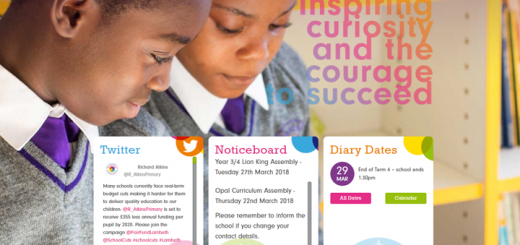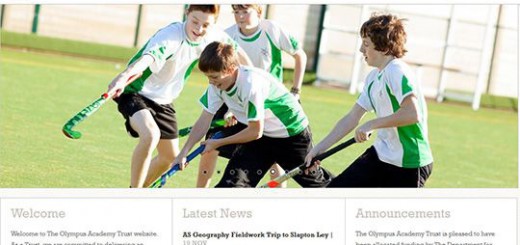The keys to success – 5 things we know about school website design

After a decade and a half of designing websites specifically for the education sector, we have compiled some key things to consider when considering your next school website.
1. Pick the right design style for your school
School websites tend to fall into 3 broad design categories – formal, informal, and illustrated. The right design style for you will be that which most fits with your ethos, values and that which stands you apart from other schools – your individuality. Formal designs tend to be favoured by secondary schools, where primary and nursery schools more often choose informal or illustrated styles. However there are no hard-and-fast rules! You may want an illustrated design to reflect your local area or community and your school personality but may wish to also add some more formal fonts and design elements as well. Or you may want to go full ‘fun’ and include children’s drawings or bright colours and animations. There is no “wrong” or “right” design from our point of view – we just want the website to best reflect your school and you are best placed to steer us in the right direction with that! If you are short on budget we also have lots of beautiful school website templates ready to use for a quick turnaround without skimping on the impact of your website. These can all be tailored to your school colours to ensure your branding is always on point.

2. Make sure your design is responsive
Your school website visitors could be accessing your site from a laptop, mobile phone or tablet or even a games console or smart TV. This means that responsive design is really important to ensure visitors have a great experience no matter what size of screen they are viewing the site on. Even with so many different sized mobile phones it can be very off putting if the website does not load correctly on each device. Common annoyances range from the minor – for example a photo not lining up correctly so only being partially visible – to the more major problems – such as not being able to access any of the menu links to get to the page you need. Not all website design providers have a set up which allows for fully responsive websites and this can cause a lot of problems down the line which are not obvious as part of the design process.
3. Make statutory information easy to find
You will no doubt be aware of the statutory information you are required to have on your website, as per Ofsted requirements. For the most up-to-date information on what you need you can download our free checklist to ensure you are fully prepared. As well as adding this information to your website, however, you need to ensure it can be found easily as this is often the first impression an Ofsted inspector will have of your school before their visit. Ensuring you have clear paths to help visitors navigate to key policies and information is vital for making this an efficient information gathering website – useful for prospective parents as well as inspections!

4. Integrate social media into your website
You may not set aside time every week, and certainly not usually daily, to update your school website if nothing major is happening. This means that information can quickly fall out of date or important dates and diary notices can be forgotten and left off your website. However many parents at your school will regularly be checking the school website to see if they missed a newsletter or some diary dates. By integrating your school social media channels, such as Twitter, which are usually updated more often and provide a regular stream of information to parents, you can ensure your school website is a great place for parents who are visiting. This also means that parents who do not want to sign up to social media themselves can still access all of your social media activity without needing to login somewhere. This removes barriers to parental communication which is a great help when school life is so busy and ever changing.

5. A great CMS means a lot
Your CMS (Content Management System) is a really vital element to your school website. The CMS is the “behind the scenes” part of your website. Your visitors will not see it but this is where you and your colleagues will go when something needs updating, adding, or deleting from the website. A great CMS makes a big difference here. Explaining why is easiest if we imagine a bad CMS. Imagine you log on to update your website and find the CMS is too difficult to navigate and you cannot find where you need to go. Where do you click? What if you do something wrong? How can you be sure you will not mess up the whole website? This worry is what puts off many school staff from doing any updates and eventually they stop trying as the training for some CMS feels like a constant uphill struggle. This is why we spent so long developing a CMS which is easy and intuitive to use. We want you to feel confident in updating your website as often as it deserves!
Get in touch if you need more information on making the perfect website for your school!













